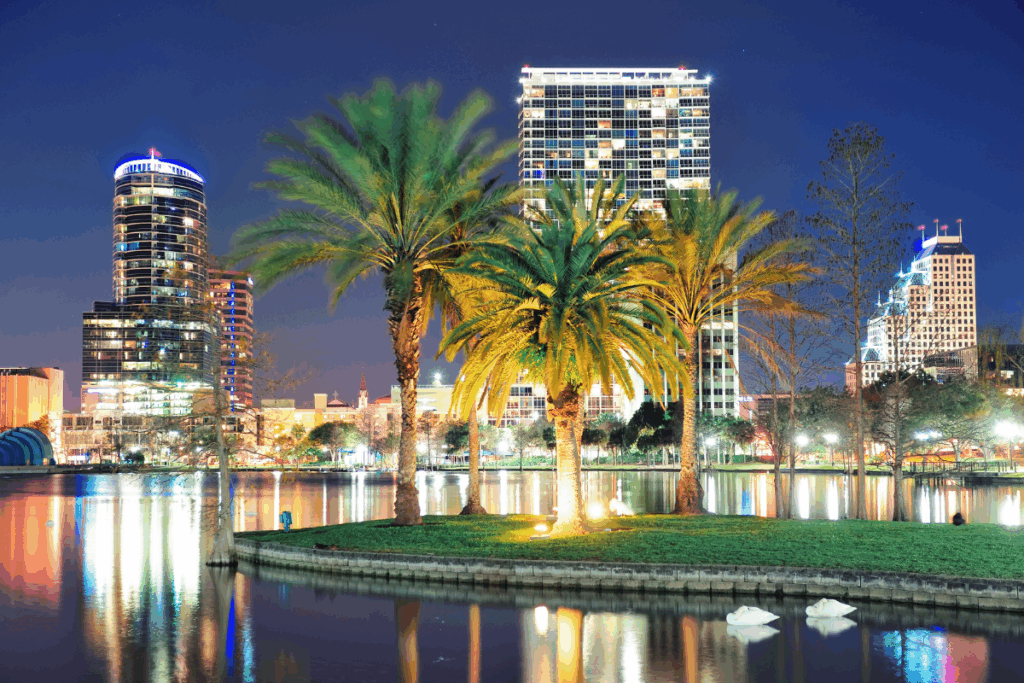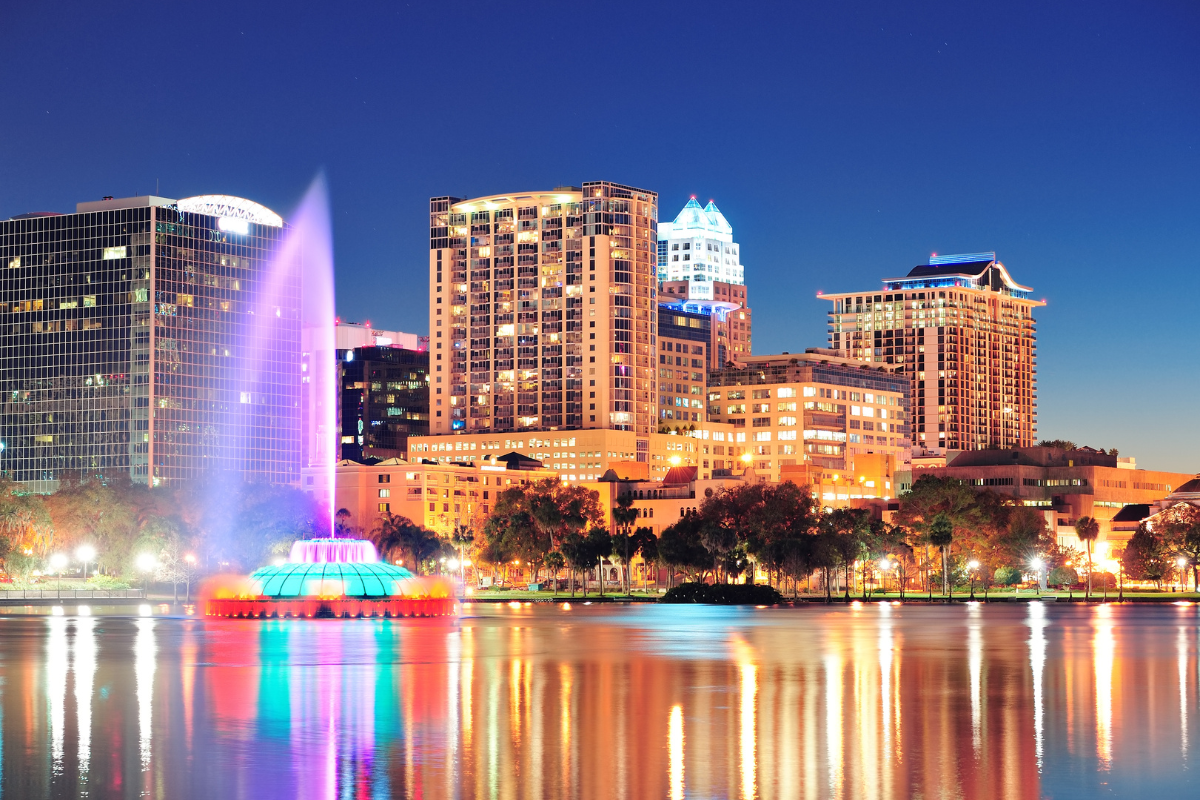Orlando’s Economic Growth and Diversification: Thriving Beyond the Theme Parks

Orlando, Florida, often synonymous with world-class theme parks and tourism, has evolved into a dynamic economic powerhouse. In recent years, the city has achieved remarkable growth, leading the nation in key metrics like job creation, population increase, and GDP expansion. This transformation is driven by strategic diversification efforts, massive infrastructure investments, and a focus on emerging industries. As of 2025, Orlando’s metropolitan statistical area (MSA) boasts a population exceeding 2.9 million, with robust employment figures and a resilient economy that balances traditional strengths with innovative sectors. This article explores the factors fueling Orlando’s economic ascent, its diversification strategies, ongoing developments, challenges ahead, and a forward-looking outlook.
Historical Context and Recent Growth Statistics
Orlando’s economic journey has roots in post-World War II tourism booms, particularly with the opening of Walt Disney World in 1971. However, the city has actively pursued diversification since the early 2000s to mitigate risks from tourism downturns, such as those experienced during the COVID-19 pandemic. By 2025, this strategy has paid dividends.
Key statistics highlight Orlando’s leadership:
- Population Growth: The Orlando MSA added 76,000 residents in 2024, achieving a 2.7% growth rate—the highest among the 30 most populous U.S. metros. The total population reached 2,940,513, with 65% of recent gains from international migration. Projections indicate continued expansion, reaching over 3 million by 2028.
- Job Growth: In the first half of 2025, the region added 31,600 jobs, reflecting a 2.1% year-over-year increase—outpacing Florida (1.5%) and the U.S. (1.1%). Total payroll employment hit 1,514,600 in June 2025, with the unemployment rate at 3.8%. Orlando led the nation in job growth among large metros in 2024, adding 37,500 positions.
- GDP Growth: Nominal GDP growth ranked No. 1 nationally in 2024 among major metros. Florida’s overall GDP growth was 2.9% in FY 2024-25, with Orlando contributing significantly (Orange County alone accounted for 9.39% of Florida’s GDP in 2023). However, projections for 2025 suggest moderation, with U.S. GDP at 1.4% and Florida near 2%.
These metrics underscore Orlando’s resilience, supported by a growing labor force and wage increases (average annual wage rose 4.6% to $64,940 in 2024).
Key Drivers of Economic Growth
Tourism remains a cornerstone, but Orlando’s growth is increasingly multifaceted. The sector added 7,700 jobs in 2024, bolstered by expansions like Universal’s Epic Universe, which opened in May 2025 and is expected to generate 17,500 jobs and $2 billion in economic impact for Florida in its first year. Disney’s $17 billion investment plan, including potential new parks and hotels, further amplifies this.
Beyond tourism, infrastructure and population influxes drive momentum. Florida’s visitor numbers are projected to reach 151.9 million in FY 2025-26, with Orlando benefiting from enhanced connectivity via projects like the Orlando International Airport expansion (adding gates and vertiports for air taxis). High consumer sentiment and business confidence also play roles, with Florida’s indices showing improvement in mid-2025.
Diversification Efforts: Building a Resilient Economy
Orlando’s diversification is a deliberate strategy to reduce reliance on leisure and hospitality, which employs about 20% of the workforce. Over 80% of workers are now in non-tourism sectors, reflecting progress in building industry clusters. Mayor Buddy Dyer has emphasized “organic growth” through homegrown companies in high-tech fields.
Prominent diversified industries include:
- Modeling, Simulation, and Training (MST): Orlando is the national epicenter, linked to the University of Central Florida’s research park. This sector supports defense, healthcare, and entertainment, with expansions like Vekoma Rides’ Americas HQ.
- Biotech and Life Sciences: Lake Nona Medical City is a hub, attracting firms and research. Biotech growth is part of broader efforts to create high-quality jobs.
- High-Tech and Digital Media: Creative Village hosts tech startups and Electronic Arts’ headquarters. Orlando added 1,800 tech jobs in 2024, outpacing many peers.
- Finance and Professional Services: Expansions by BNY Mellon and Charles Schwab have boosted job postings in finance (+3.3% in early 2025). Florida’s finance sector led job growth statewide in mid-2025.
- Advanced Manufacturing and Semiconductors: NeoCity’s expansion includes 300+ acres for manufacturing, with partnerships like Skywater Technology, creating high-wage jobs. Florida’s manufacturing added 1,400 jobs in February 2025.
- Healthcare and Education: Sectors added 6,900 jobs in 2024, driven by an aging population. UCF’s downtown campus expansions support this.
These clusters are fostered through initiatives like the Orlando Economic Partnership’s 2045 vision, aiming to position the region as a global innovation hub.
Major Development Projects Fueling Expansion
Over $50 billion in investments are reshaping Orlando through 2025 and beyond. Notable projects include:
| Project | Investment | Key Features | Economic Impact |
|---|---|---|---|
| Disney World Expansion | $17B | New parks, hotels, retail | 50,000+ jobs, affordable housing support |
| Universal Epic Universe | $7B | Theme park doubling footprint | 17,000+ jobs, $2B annual revenue boost |
| NeoCity South Expansion | N/A | Semiconductor hub with UF partnerships | High-wage tech/manufacturing jobs |
| Orlando International Airport Expansion | $1B+ | New terminals, air taxis | Handles 100M+ passengers, boosts travel |
| SunRail Sunshine Corridor | Multi-B | Rail to Disney, airport link | Reduces traffic, enhances connectivity |
| Creative Village Phase Two | $600M | Housing, hotel, tech offices | Attracts innovators, urban revitalization |
These initiatives create tens of thousands of jobs while diversifying into sustainable tech, transportation, and urban living.
FAQ
Challenges and Future Outlook
Despite strengths, challenges loom. GDP growth may dip below 1% in late 2025 due to inflation, softening consumer spending, and tourism headwinds (e.g., 2.8% drop in airport passengers early 2025). Real estate shows cooling, with home sales down 3.4% year-over-year. Florida’s overall growth is expected to moderate to 1.9-2.0% annually.
Looking ahead, UCF forecasts Orlando’s economy growing at 2.2% annually through 2028, with 38,100 net jobs added and personal income rising 5.9% yearly. Sectors like construction (2.2% growth) and leisure (1.7%) will lead, while manufacturing may contract. The city’s Growth Management Plan refresh emphasizes sustainable development to accommodate expansion. With continued focus on innovation, Orlando is poised to remain a national leader in economic vitality.
What are the main industries driving Orlando’s economy in 2025? Tourism leads, but diversification includes modeling/simulation, biotech, high-tech digital media, finance, healthcare, and advanced manufacturing.
How fast is Orlando’s population growing? It grew 2.7% in 2024, adding 76,000 residents, and is projected to exceed 3 million by 2028.
What is the job growth rate in Orlando? 2.1% year-over-year in mid-2025, with 31,600 jobs added in the first half of the year.
How is Orlando diversifying beyond tourism? Through clusters in tech, biotech, and manufacturing, supported by hubs like Lake Nona and NeoCity, and partnerships with UCF.
What are the economic projections for Orlando through 2028? Average annual growth of 2.2% in real gross metro product, with 38,100 net jobs and 5.9% personal income growth.
Are there any challenges to Orlando’s growth? Yes, including moderating GDP, inflation pressures, and potential tourism slowdowns, but diversification efforts mitigate risks.
Ready to turn your real estate dreams into reality? Contact Realtor Stephens today for a FREE personalized home valuation and expert guidance—your perfect property awaits!”


